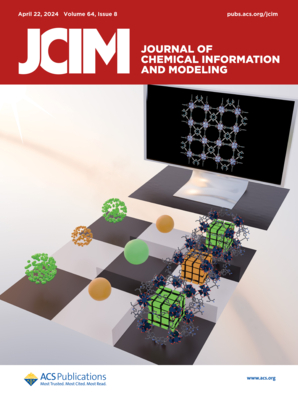SMVSNN:一种基于脉冲多视图连体神经网络的抗癌药物相互作用预测智能框架。
IF 5.3
2区 化学
Q1 CHEMISTRY, MEDICINAL
引用次数: 0
摘要
研究协同药物组合在癌症治疗中至关重要,通过补充药物作用来提高疗效,减少耐药性,最大限度地减少副作用。药物-药物相互作用(DDI)分析提供了重要的理论支持,随着数据科学的兴起,智能算法越来越多地取代传统的体外筛选来预测潜在的DDI。针对以往计算方法的局限性,如单一视图的应用、药物对特征过于直接的拼接以及现有数据编码难以处理等,本文提出了一种新的DDI分析与预测框架,即基于Spiking多视图Siamese神经网络(SMVSNN)框架。首先,使用Siamese尖峰卷积网络和尖峰神经感知器将每个视图中的两种药物数据处理成融合特征。其次,通过自学习的关注权重模块,将多个视图的处理特征整合成统一的表示。最后,将该统一表示输入到一个尖峰多层感知器网络中,得到预测结果。与传统的智能算法相比,SMVSNN中的尖峰神经元和连体网络可以更有效地从药物对数据中提取和整合潜在信息。从权威的公共数据库中提取真实的抗癌药物数据,包括904种药物、7730条DDI记录和19种药物相互作用,以评估我们框架的有效性。5倍交叉验证表明,SMVSNN在大多数指标上优于以前的模型。SMVSNN有望成为推测抗癌治疗中潜在协同药物组合的有效方法。本文章由计算机程序翻译,如有差异,请以英文原文为准。
SMVSNN: An Intelligent Framework for Anticancer Drug-Drug Interaction Prediction Utilizing Spiking Multi-view Siamese Neural Networks.
The study of synergistic drug combinations is vital in cancer treatment, enhancing efficacy, reducing resistance, and minimizing side effects through complementary drug actions. Drug-drug interaction (DDI) analysis offers essential theoretical support, and with the rise of data science, intelligent algorithms are increasingly replacing traditional in vitro screening for predicting potential DDIs. Considering the limitations of previous computational methods, such as the application of a single view, overly direct concatenation of drug pair features, and existing data encoding that is difficult to handle, this paper proposes a novel DDI analysis and prediction framework, called the Spiking Multi-View Siamese Neural Network-based (SMVSNN) framework. First, the data of two drugs in each view are processed into fused features using a Siamese spiking convolutional network and a spiking neural perceptron. Second, the processed features from multiple views are integrated into a unified representation through a self-learning attention weight module. Finally, this unified representation is fed into a spiking multilayer perceptron network to obtain the prediction results. Compared to traditional intelligent algorithms, the spiking neurons and the siamese network in SMVSNN can more effectively extract and integrate latent information from drug pair data. Real anticancer drug data, including 904 drugs, 7730 DDI records, and 19 drug interactions, were extracted from authoritative public databases to assess the effectiveness of our framework. The 5-fold cross-validation indicates that SMVSNN outperforms previous models on the majority of metrics. SMVSNN is poised to be an effective method for inferring potential synergistic drug combinations in anticancer therapy.
求助全文
通过发布文献求助,成功后即可免费获取论文全文。
去求助
来源期刊
CiteScore
9.80
自引率
10.70%
发文量
529
审稿时长
1.4 months
期刊介绍:
The Journal of Chemical Information and Modeling publishes papers reporting new methodology and/or important applications in the fields of chemical informatics and molecular modeling. Specific topics include the representation and computer-based searching of chemical databases, molecular modeling, computer-aided molecular design of new materials, catalysts, or ligands, development of new computational methods or efficient algorithms for chemical software, and biopharmaceutical chemistry including analyses of biological activity and other issues related to drug discovery.
Astute chemists, computer scientists, and information specialists look to this monthly’s insightful research studies, programming innovations, and software reviews to keep current with advances in this integral, multidisciplinary field.
As a subscriber you’ll stay abreast of database search systems, use of graph theory in chemical problems, substructure search systems, pattern recognition and clustering, analysis of chemical and physical data, molecular modeling, graphics and natural language interfaces, bibliometric and citation analysis, and synthesis design and reactions databases.

 求助内容:
求助内容: 应助结果提醒方式:
应助结果提醒方式:


